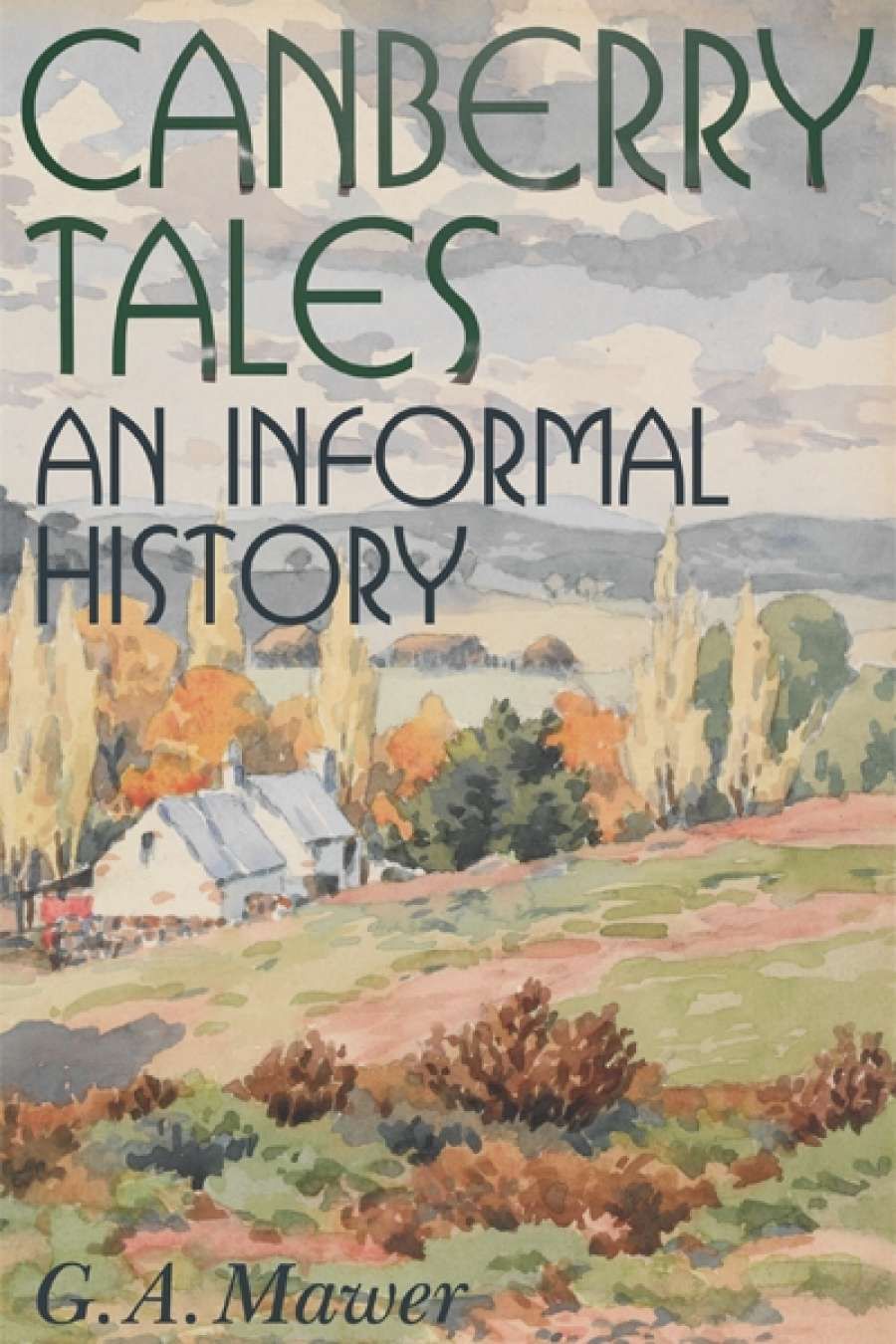
- Free Article: No
- Contents Category: Australian History
- Review Article: Yes
- Online Only: No
- Custom Highlight Text:
I n 2013, Australians will celebrate the centenary of modern Canberra. This singular anniversary – intensely local but also emphatically national – commemorates not the actual building of the capital (that process was fraught and would not gather pace until the 1920s), but rather the optimistic laying on 12 March 1913 of three foundation stones for the grandiosely named Commencement Column on Capital Hill where the Australian Parliament, seat of our increasingly raucous national democracy, stands today. The high point of the ceremony was the naming by Lady Denman (wife of the governor-general) of Australia’s new capital as ‘Canberra’.
- Book 1 Title: Canberry Tales: An Informal History
- Book 1 Biblio: Arcadia Publishing, $39.95 pb, 255 pp, 9781921875649
The choice, not surprising but uncertain, was widely welcomed for its origins as Canbery or Canberry (and other variations) in the site’s much earlier Aboriginal history and for its survival as the name of pastoral settler Joshua John Moore’s Canberry station, given legal recognition in the 1820s under Governor Ralph Darling’s new rules for land tenure in colonial New South Wales. From that time, the name had evolved as Canberra or Yass-Canberra, embracing the wider district also known as the Limestone Plains, which was eventually selected as the site for the national capital. In the honouring of history and of antecedents, there was relief that options such as Kangaremu, Myola, Eucalypta, and Sydmeladperho had been avoided.
With Canberra’s centenary in prospect, historian Granville Allen Mawer has produced an engaging and affectionate reading of the capital’s history, as seen through the window of the multifarious life and affairs of one particular precinct. Reaching back to the distant geological past and to the later Aboriginal occupation and use of the Canberra site over thousands of years, Mawer’s account is long in time but has a tight focus on one geographic location: the home paddocks of Moore’s original Canberry station that today, as the Acton Peninsula, forms part of the shoreline of Lake Burley Griffin. Sadly, the name Acton had been superimposed on the old Canberry acres in 1878 when the Jeffreys family, new owners of the property, commemorated their ancestral home in distant Denbighshire in the north of Wales; for them, it is said, Canberry was the name not of the ancient Aboriginal Dreaming but of a disreputable haunt near Limehouse in London.
In telling the Canberra story through the microcosm of the Acton Peninsula, Mawer eschews panorama in favour of a distilled, closely observed, intensely local narrative. Richly absorbing in its local detail, this finely wrought account nevertheless embodies much of the larger Canberra story. Over time, the Acton Peninsula provided the setting for Aboriginal ceremony and succour, followed by the gradual but emphatic dispossession of the Indigenous owners in the face of European pastoral occupation. Later it served as the base camp from which the young Australian Commonwealth planned and built itself a home in a carefully planned national city. In those years, Acton served as the administrative centre of the fledgling capital, a place of large ambition and aspiration, but also of the quiet hopes, joys, and personal tragedies of ordinary family life. Today the peninsula is no longer a place of residence and community, as it was for much of the nineteenth and twentieth centuries. Although traces remain, that past is gone now, swept aside and largely invisible. In its place stand two proud national institutions (and their attendant car parks): the Australian Institute of Aboriginal and Torres Islander Studies and the National Museum of Australia. Edifices of history both, their physical presence yet negates the long story of human occupation that preceded them.
In the vast homogenous suburban sprawl of present-day Canberra, it is difficult for visitors and residents to discern the underpinnings of the city’s long human history, although traces remain for those who care to look. It is true that many local Aboriginal, pastoral, and pioneering names have been honoured throughout the Australian Capital Territory, but for many they lack context, meaning, and the simple recognisability that attends the Territory’s more obviously national place and street names; and in the blur of motorways and roundabouts or the sweep of the bridges that span the former floodplain of the Molonglo River filled now by Lake Burley Griffin, there is little sense of the life that was lived on the Limestone Plains before modern Canberra began to emerge from the bush. Even the busy years when the city was in construction have faded from memory. While the inner core of most of the original twentieth-century suburbs remain (Westlake is gone, subsumed in the modern suburb of Yarralumla, which was itself once a pastoral estate), even these are changing beyond recognition, despite heritage listings intended to offer protection. Kingston – the former Eastlake – with its modern apartments is a spectacular example of transformation, where whole streets have been razed for redevelopment.
Mawer’s tales of Acton are meticulously researched and elegantly written. In their accumulation of detail, they give Canberra and its past a human face and a rich sense of identity, purpose, and aspiration that is not always readily appreciated either by the wider community of Australians or even those who live there. Steeped in the local and the particular, the stories of old Canberry are also a part of the nation itself.


Comments powered by CComment